Story of a strong vision and an unassailable will
When, one August morning in 1932, a silhouette of a young man appeared in the door of the Trade Licensing Office and the sharp summer sun shone on the clerk’s desk, nobody could have anticipated the story that began to unfold. That man was František Halama, the 19-year old son of a local glassmaker, and the plan he had was plain and simple: “I request a Trade License to engrave and grind glass. I wish to build a company and produce branded glass that the whole world will admire.”
But, let’s start from the beginning.
1913
Birth of František Halama II.
Workshop in Alšovice
Workshop in Alšovice
1913
Birth of František Halama II.
It was not by accident that František had had the idea. He had come to know the smell of molten glass since his birth. Every day he would watch his father create magical blossoms and party-colored figures using only his own breath and skillful hands. And, should you walk with him to the porch of the house in which he was born in Alšovice, and take a look at the surrounding hills, you would have found similar craftsmen in every other home. In this region, the craft of glassmaking has been passed down from generation to generation since the Middle Ages, and the dexterity of local glassmakers is renowned. Artificial glass jewelery from local workshops was admired by citizens of Paris, Northern America, even Africa.
1930
Studies at the State vocational glass-making school in Železný Brod
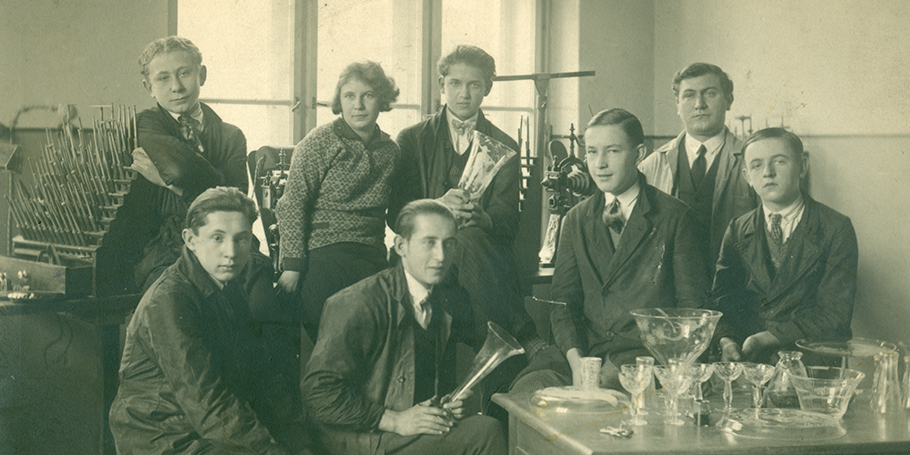
1932
Aged 19, František Halama II. establishes his own glass-making manufacture in Alšovice
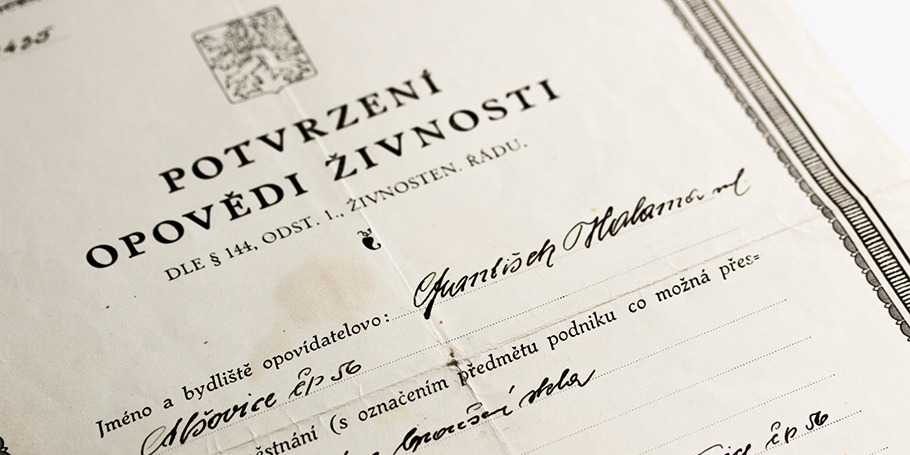
State vocational glass-making school in Železný Brod
State vocational glass-making school in Železný Brod
„So many new people, whom I have not yet met,“
„So many new people, whom I have not yet met,“
Even still, František Halama surpassed his contemporaries by the strength of his will and his remarkable zeal. The family supported him – his parents allowed him to attend a specialized glassmaking school in Železný Brod and a Master Craftsman’s class in Nový Bor. Yet, the times were hard for entrepreneurship. The worldwide economic crisis hit Czechoslovakia hard in early 1930s – industry and agricultural companies collapsed, tradesmen went bankrupt, the number of unemployed exceeded one million, and ration cards were introduced. It was exactly at that time when František decided to start his own business in the field he was most attracted to: glass engraving and grinding.
Destiny gave him the ability to envision the future and follow his vision without hesitation. Today, we would probably call him a visionary, while his neighbors took him for a practical person with certain aspects of a daydreamer. That was only right, as the Arabian term for a dreamer sounds just like “halama”. Besides imagination and zeal, František had one other capacity: he excelled in communicating and selling his goods. He never missed an opportunity to present the fruit of his work at exhibitions, even though they were held on the other side of the world. “So many new people, whom I have not yet met,” he delighted.
1936
Start of export to America, India, Italy and other countries
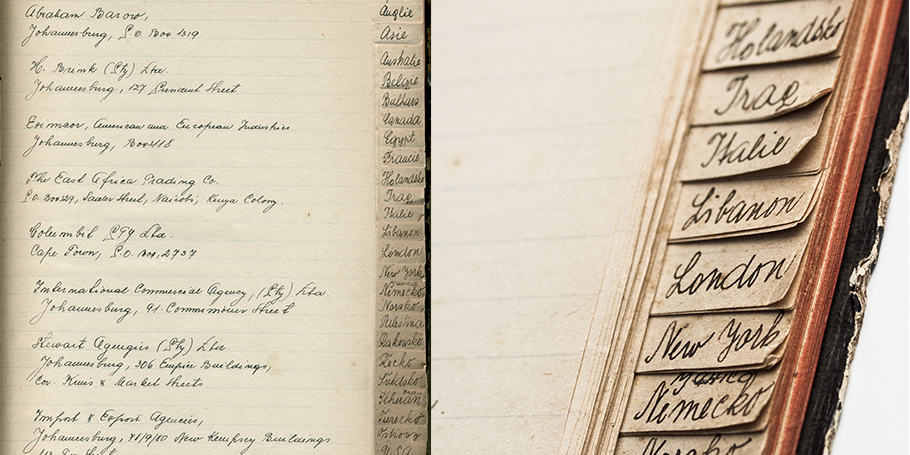
The highest award of the French government
The highest award of the French government
„Our products will decorate the homes of kings and presidents.“
„Our artistic glass in every household“
„Our products will decorate the homes of kings and presidents.“
„Our artistic glass in every household“
František Halama combined expert knowledge with a refined aesthetic sense. He only accepted perfect work. He connected famous designers with the best skilled craftsmen he knew. He infected them with his passion and persuaded them to accept his plan that was sure to captivate them all: “Our products will decorate the homes of kings and presidents.” The slogan of the era, “Our artistic glass in every household” implies he took the wider audience into account as well. In 1936 he exported not only to European countries, but also to America and Asia. A great satisfaction came a year later, when he was awarded the highest prize of the French government at the Paris World Fair.
1938
Success at the International craft fair in Berlin
1938
Success at the International craft fair in Berlin
1939
František Halama II. marries Olga Sochorová

1941
New grinding shop built in Železný Brod next to the company headquarters

1942
Headquarters of František Halama company, Jirchářská 55, Železný Brod
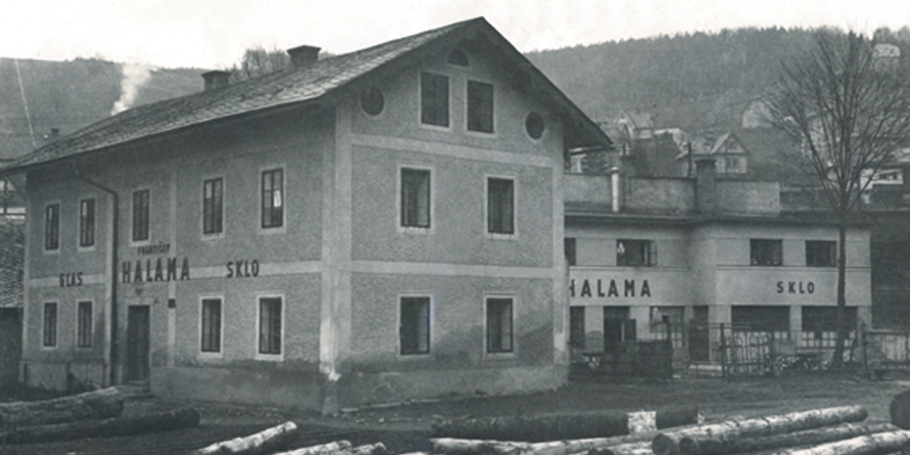
The German eagle started spreading her wings over Europe, but the shadows hadn’t yet caught up with František. He prospered in his personal life, too. His beloved Olga accepted his proposal and they got married a few months later. At the start of World War II, the newlyweds were already living in Železný Brod, where they moved from Alšovice with the whole glassmaking factory. The rapid development of the company required new land to be bought in order to build new workshops, allowing for the growing demand of František Halama brand glass products to be satisfied. The greatest interest, just as it is today, was raised by the line of hollow glass, blown into perfect, artistic metal moulds. Let’s stay a while with these.
MOLDS – A Family Treasure
four-piece mold of a vase
four-piece mold of a vase
Everybody finds it natural for a baker or pastry cook to use a mold forming the dough into a cake. Molten glass is fairly similar. František the Glassmaker had higher ambitions than just cakes. He wanted to create living pictures, enchanted into glass: fairies dancing on the tops of vases, the lush life of a spring garden, growing through a perfume bottle. He approached each fruit or dessert bowl as a unique work of art meant to amaze people.
Designs are the basis to develop new shape
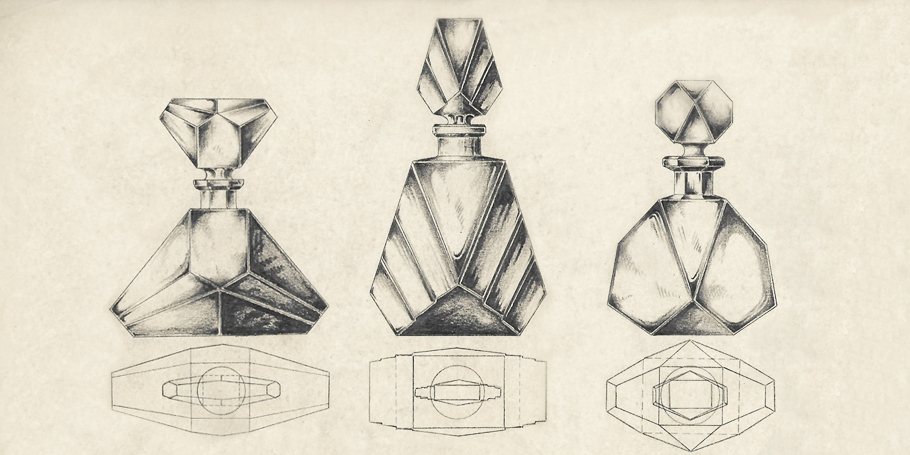
In order to make this vision happen, he first had to contact a designer, who drew it skillfully. Next, a sculptor and a molder took the design to create a three-dimensional object, which could be held in a hand. They corrected details removing flaws. After weeks and months of work they made the final metal mold, which would be used to produce objects for decades to come.
Looking into the newly built workshop next to the company headquarters - Jirchářská 55
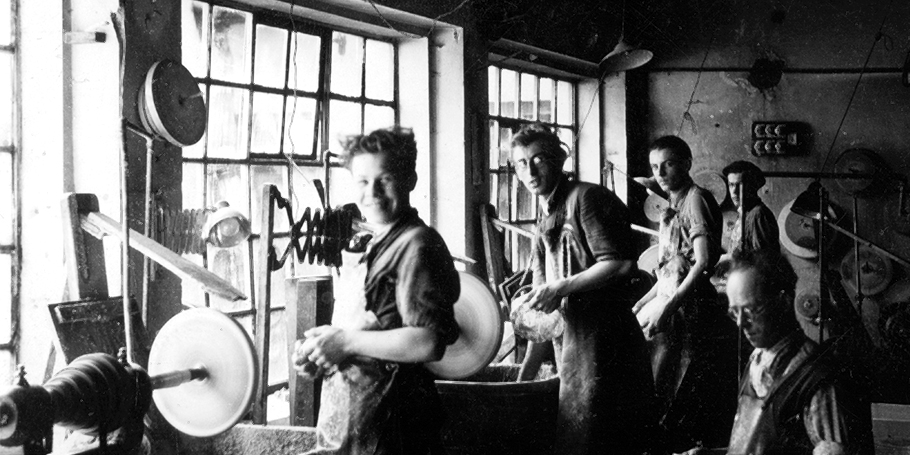
Still, it is wrong to suppose that the final František Halama product is made simply by shaping glass in a mold. After hours of cooling, a semi-finished product is turned out and passes through the expert hands of many people. Excess glass is cut off, details are ground, polished, refined, and emphasized by matting or glossing. If not for expert hands and attentive eyes, the products would lack soul. And that is exactly what František Halama strove for.
Wartime Years
1942
Two grinding shops were acquired and car headlight glass, buttons, badges and other items of daily use started to be produced

The specific environment of the wartime economy called for less traditional approaches to keep the company going. František built two grinding shops and expanded production in a direction, which may have seemed unexpected of an entrepreneur of artistic background. He started to produce glass for car headlights, signals, reflectors and warning glass. He ground lenses for flash lamp producers. He followed in the tradition of glass jewelery producers and started to produce buttons.
Sample book of glass badges
Sample book of glass badges
He figured that he might succeed by producing glass badges, which would be cheaper than the metal ones. And he was right. From today’s perspective, it may seem a trifle, but the 1930s and 1940s were the golden era of associations, sports clubs, gymnastic unions, cottager alliances, political movements, and parties. Each member of any such community wore their badges proudly.
1944
Birth of František Halama III.
In the spring of 1944, a joyful moment happened in the Halama family. A son was born, the successor of the clan and of the family glassmaking tradition. He received the name František, after his father and his grandfather.
František Halama, with his fifty employees, welcomed the end of the war in good financial standing and health.
The company was allowed to once again fly to the world, which was taking its first peaceful breaths after six years. The spring air brought with it hope and joyful expectations.
1946
Picture of the 2nd anniversary celebration

1948
“Uniqueness Prize” awarded by the Sultan of Morocco during a trade fair in Casablanca

No one in Železný Brod, not even the visionary František Halama, had any idea of the plans the Soviet ruler Joseph Stalin had prepared, and nobody expected what would arrive three years later.
The Dark Ages
Company nationalization document
Company nationalization document
From our point of view, post-war development in Czechoslovakia may seem inconceivable. Yet, the situation in the heart of Europe sped inexorably in that direction.
In Yalta, even before the war ended, Roosevelt, Churchill, and Stalin agreed on how the United States, the United Kingdom, and the Soviet Union would divide areas of influence in post-war Europe. People in Czechoslovakia were grateful to the Soviet soldiers for freeing the country from the loathed Nazis. After the hell people had gone through they wished now to build a heaven on earth. The Nazi “superior race” ideology was replaced with the Soviet’s “classless society,” where all people would be equal, which captivated entire multitudes. For three post-war years, Czechoslovak communists led and, supervised by their Kremlin comrades, occupied all important positions in the state, and after February 1948, the Red Terror broke out. The Czechoslovak regime was starting to be called a people’s democracy, a new Constitution came into force, outlawing all “bourgeois” features like entrepreneurship, independence, success, and wealth.
27. 2. 1948
Company nationalized, stock, buildings and compounds seized, the national company ceased to use the Halama mark, it took over and kept using only the “Železnobrodské sklo” mark
Overnight, František Halama, the factory owner, turned into a public enemy. As a wealthy and successful person, he was among those to be excluded from society where there are no exploiters and all people work together to achieve a better tomorrow. As early as two days after the communist coup, on the 27th of February, 1948, the company, including the money, precious molds of art, the stock, buildings, and land were seized and all of it fell into the hands of the state.
As any totalitarian ideology is able to evoke negative characteristics in people, unsuccessful neighbors came, with National Front bands on their sleeves, happy to nationalize and rummage about in the Halama family’s property. Such daylight larceny took place all over the country. In every village and town there were people, who were better off due to their zeal and entrepreneurship. And these had to be “annihilated.”
1948–1966
The company’s compounds and workshops are used by the Železnobrodské sklo national enterprise
People living in a totalitarian system have two options: to flee or to stay. František Halama chose the latter. In spite of being awarded the “Uniqueness Prize” by the Sultan of Morocco, regardless of the numerous other appraisals from world fairs and immeasurable experience, he became an ordinary worker in what used to be his own company. His son was not allowed to study. The family was subjected to home searches and interrogations by the secret police. The family of a verified communist moved into his house, so František Halama would meet the unwelcome visitors in his kitchen every day. Later on, František’s plant was absorbed by a giant, national company, Železnobrodské Sklo. It swallowed up all private glassmaking workshops all over the Jablonec nad Nisou region. Such was the reality of the victory of the working people.
What František Halama felt at that time is really hard to imagine. He was not allowed to pass on his experience of running a glassmaking factory over to his son, who was only 4 years old. He experienced ample disillusionment, yet he still believed this unjust period would soon be over and all will come out well. All he saw around him contradicted common sense and his own instincts as an entrepreneur. Who would have thought that this dark episode would last for four decades?
Železnobrodské Sklo, national enterprise, plant 1
Železnobrodské Sklo, national enterprise, plant 1
The contemporary press glorified the victories of socialism on all fronts. From 1948 to 1989, the state company Železnobrodské sklo exported ground vases, fruit and dessert bowls, perfume bottles, glasses, candy boxes, liquor, and vanity sets produced by the means of molds stolen from František. The glass of the Jablonec region was presented abroad as the pride of the Czechoslovak people, who were unaware of the paradox.
Gradually, with the decreasing efficiency of the socialist economy, the quality of glass products coming from Železný Brod declined. Series of items produced without attention to detail came from the hands of frustrated people, lacking both the interest in meticulous craftsmanship and any perspective.
Company headquarters after twenty years of the totalitarian regime
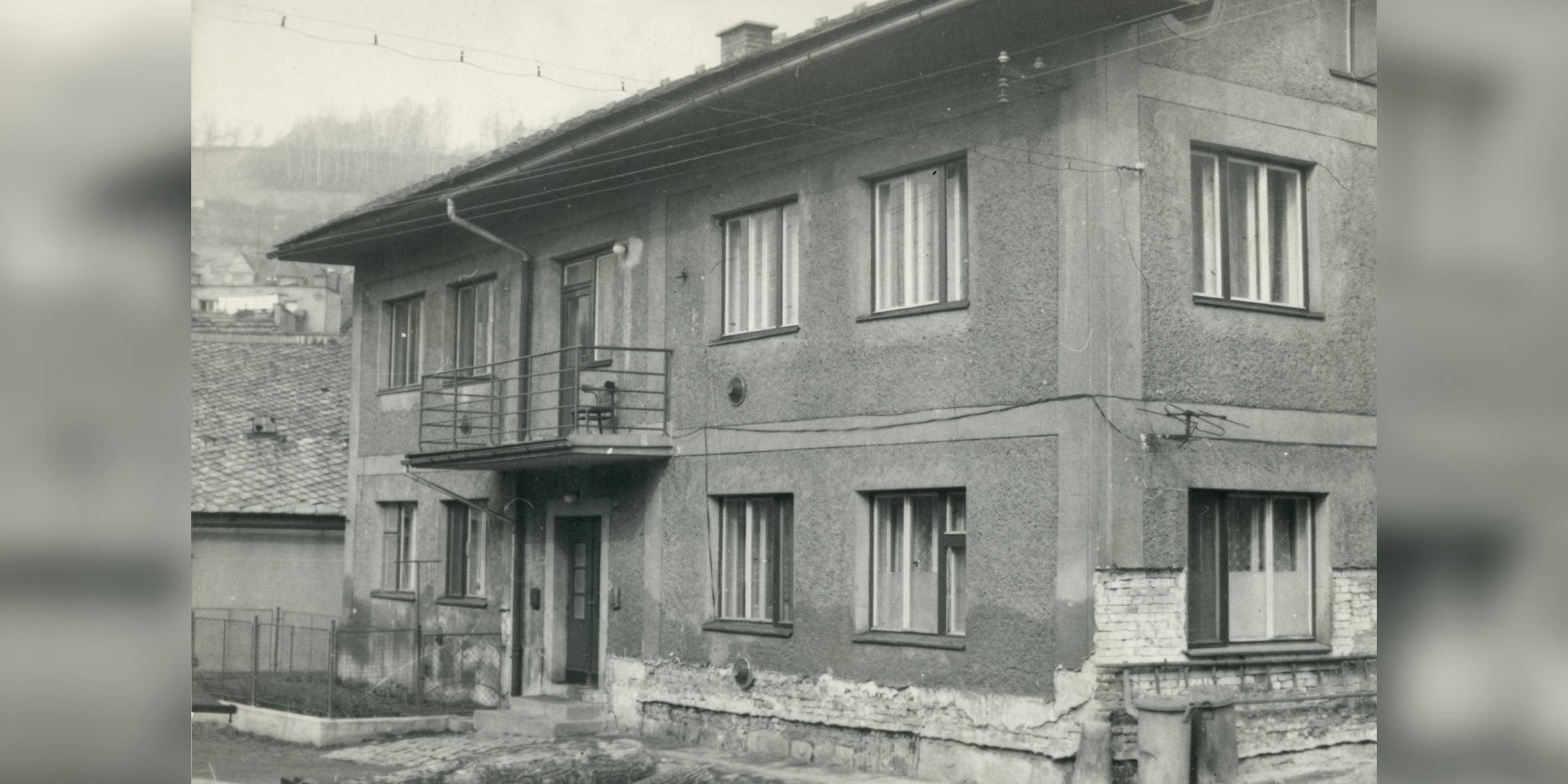
Months, years, and decades passed as the nation began to grasp that the shining future under the red star would never happen. A short walk in Prague to look into shop windows was enough for everyone to understand that heaven on earth should not look like this. Furthermore, living in a lie distorted people’s souls, and even the ruling class quit believing in the ideals of communism. The Soviet Union fell apart and the Kremlin had their own problems to mend.
1969
František Halama I., the company founder dies; František Halama III. Marries Miroslava Vochozková; Olga Halamová is born
1969
František Halama I., the company founder dies; František Halama III. Marries Miroslava Vochozková; Olga Halamová is born
1975
Birth of Robert Halama
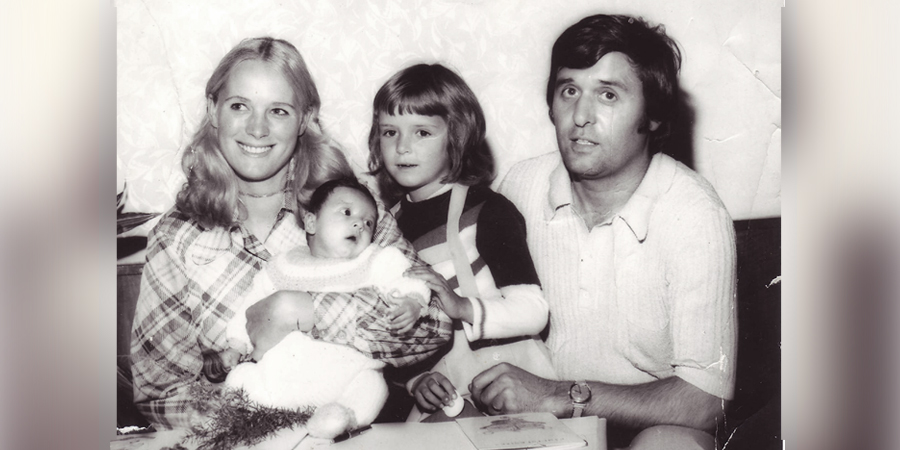
1976
František Halama II. dies

Resurrection
Velvet revolution
Velvet revolution
1989
Fall of communism in Czechoslovakia
1991
Start of restitution of property, application submitted by František Halama III. and his mother Olga
At the end of 1989, people in Czechoslovakia took to the streets jangling keys, sending the government of the “unique truth” into the trash heap of history.
What was happening in the Halama family in the meantime? František’s son grew, became a machine operator, got married and had two children – a daughter, Olga, and a son, Robert. Grandpa František, the principal character of our story, could have enjoyed his grandchildren for only a short time. The hardship he had lived through impacted his health and, in 1976, after a third heart attack, he died, aged 63.
He would have enjoyed the events of 1989, when a heavy burden fell from the people and long-desired freedom came. Václav Havel, the major enemy of the communist regime, became president. All of a sudden, anything was possible. To go to Vienna for coffee. To tell one’s children that the Soviet occupation was not a help from a friend. To travel around the world with a backpack. To start a business. Or, to reclaim one’s rights.
Such was the decision, which František Halama Jr., his wife, Miroslava, his son, Robert, and daughter, Olga, were facing. They knew that the Czechoslovak state, before the eyes of the whole world, declared to indemnify the injustice committed against its citizens decades ago. The era of restitutions began and former owners were supposed to regain their stolen property. Or rather the remnants of it.
1991
Zahájení restitucí zabaveného majetku, žádosti podává František Halama III. s matkou Olgou
Searching for rests of seized production means
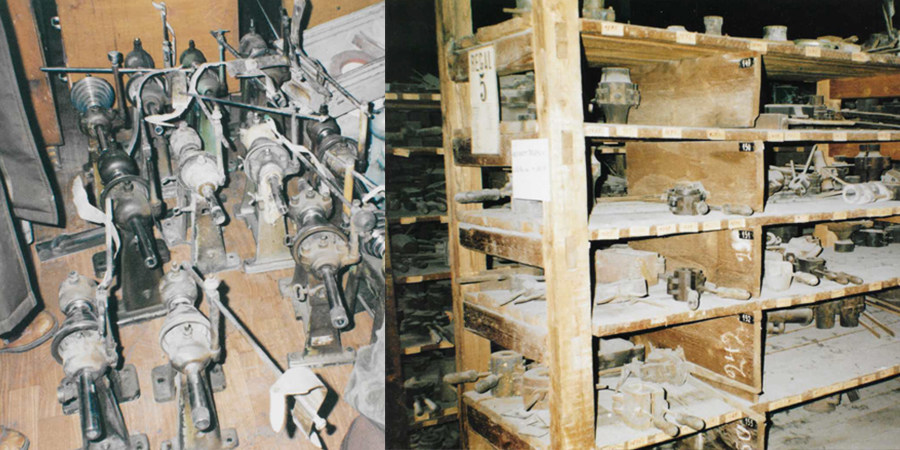
1992
Olga Halamová, née Sochorová dies
The Halamas were visited by a mysterious stranger with a tempting offer to buy all of the grandfather’s intellectual property, including the molds and designs. For the family, having no personal experience with making glass, this was a great temptation. The family council gathered, at the very same house, Number 55 in Železný Brod, which Grandfather had chosen to be his headquarters before World War II. This address he inserted in labels affixed on all of his products that were dispatched to the world. The family council decided unanimously: We’re not selling. We want our glass molds back and we’ll resume Grandfather’s work. We’ll obtain the missing experience along the way. The most beautiful Czech glass bearing the František Halama brand will once again be admired by the whole world. And, we’ll do this together as a family.
Legal battles began, since nobody wanted to return something they considered to be their property for the past 40 years. Some glassmaking molds were lost, other tools suffered mysterious damage upon being handed over. Privatized companies started to feel that a troublesome competitor was rising up, and they thought they risked losing an important part of their assortment. Scrambles went on and after years of disputes, even the entire court record was lost.
1994
František Halama III. and his son Robert resume production of original pattern products
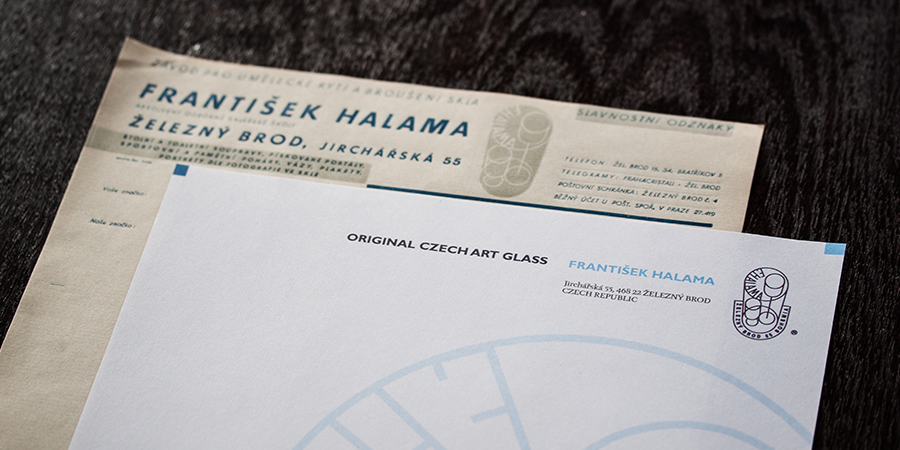
1996
Successful export to Europe, e.g. to France, Italy, Switzerland and Portugal, an important part is exported to the U.S., too
The time of uncertainty, when nobody was able to foretell the outcome, was over at last, and, in the fall 1994, the Halama family was ready to announce the restored Halama brand – Original Czech Art Glass was re-entering the market. Art Nouveau fairies were set to dancing on hand-ground vases again. Small and large animals began running on the rims of fruit and dessert bowls. Flowers of admirable forms burst into bloom on gold-decorated perfume bottles and liquor glasses.
František Halama’s name and spirit, as so many times before, spread from Železný Brod to the world.
The Story Continues
František and Robert Halama
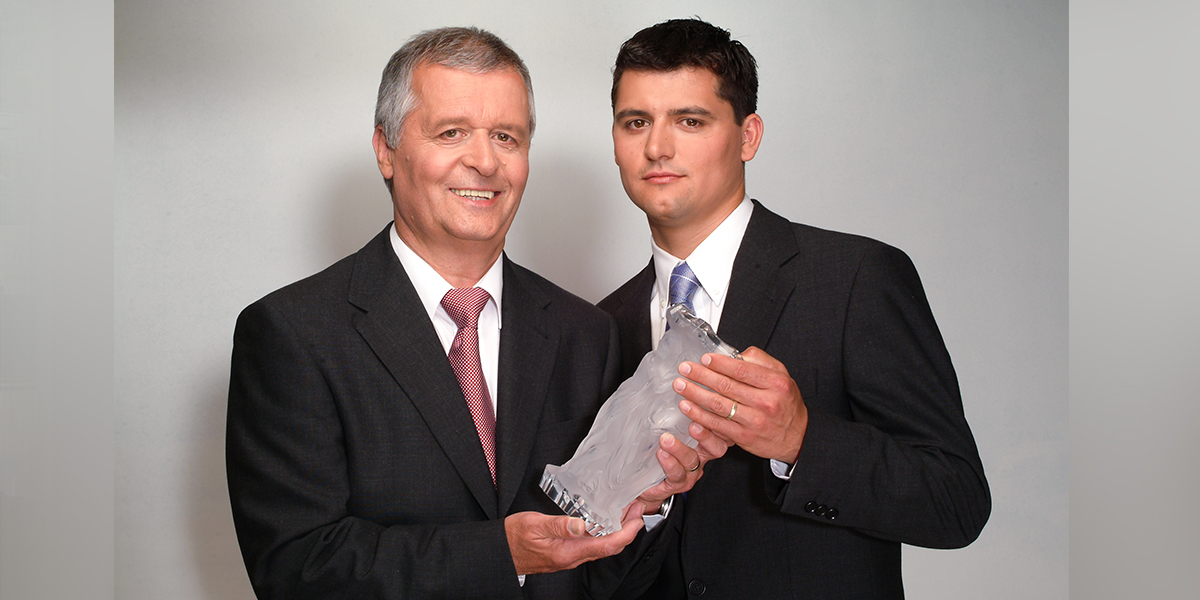
A ground glass vase is able to open a set of doors. This is what František and Robert Halama, who have been bringing glass beauty to customers for twenty-five years, are well aware of.
They have not been offering only the transparency of Czech glass and the imagination of Czech designers. František Halama’s products combine the subtle work of skilled hands, attentive eyes, and focused minds. They reflect the joy of the person who produced the item, taking delight in its perfect beauty.
František Halama’s vision when he started his own business in August 1932, that is, to produce Czech glass as finely as possible, floats over each vase, bowl, and ornament like an invisible mist. The vision, so strong that it was not crushed by human envy or greed, tanks, secret police, nor any of the totalitarian regimes. The dream, so powerful that it helps František’s successors open doors all over the world.
„What can be visualized can be brought into being.“
And the world accepts the Halama family’s work with outstretched arms. Most of the production leaves Europe for the Middle East, Persian Gulf countries, China, or Japan. The backbone of František Halama’s production still covers embossed glass, produced using the grandfather’s artistic molds, but even still, the father and the son do not shrink from new challenges. Their portfolio includes exclusive glass for special occasions, produced as a single item. František, the founder, used to say: “What can be visualized can be brought into being.”This is what his grandson, Robert Halama, has followed, running the family company for several years now.
2007
Entrepreneur of the Year award
In the fall of 2007, Robert got the idea that his father would be pleased by the “Entrepreneur of the Year” award, and he sent in the application in his father’s name. František Halama took part in the regional round ceremony and was very surprised to leave the stage with the first-place prize. This prize was an important turning point for the company, as such events are held under the auspices of prominent politicians and ministers, and the Halamas saw the door to areas of diplomacy and protocol open. Here, gifts are extremely important, since they reflect respect and good will, they represent the Czech state and have to be exclusive. So František and Robert Halama became unofficial Czech diplomats, of a kind, assisting in making that delicate first contact with the world via their products.
2010
Václav Havel offered the glass statue of the Lion of the Senate
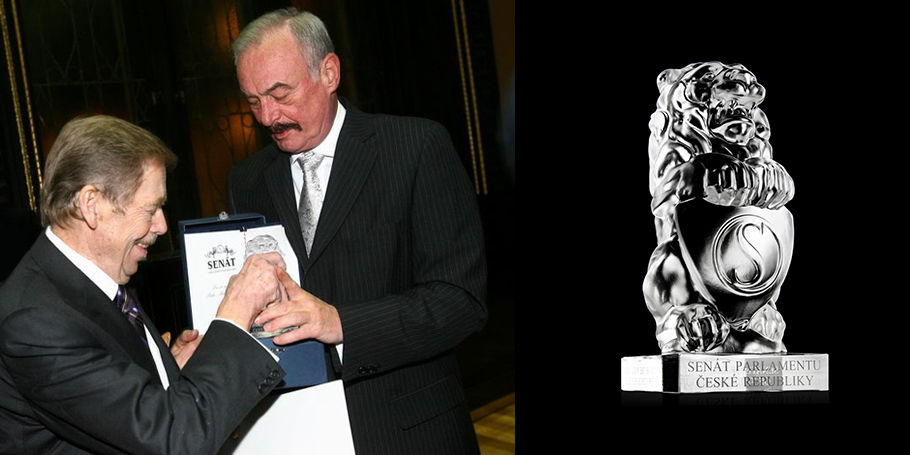
Love for glass is faith in the miraculous power of beauty elevating the human soul.
Fairy tales claim that love overcomes all adversity. Love for glass is faith in the miraculous power of beauty elevating the human soul. And love is what Robert Halama’s children were born from, so the family tradition is allowed to further unwind. The children have already reached the age allowing them to seek their own visions. The daughter wonders about the way ground glass might look in the 21st century, and the son, looking at the map of the world in his father’s study, thinks where it might yet be admired.
The story keeps unfolding.

Valentine’s Day 2023
February 2023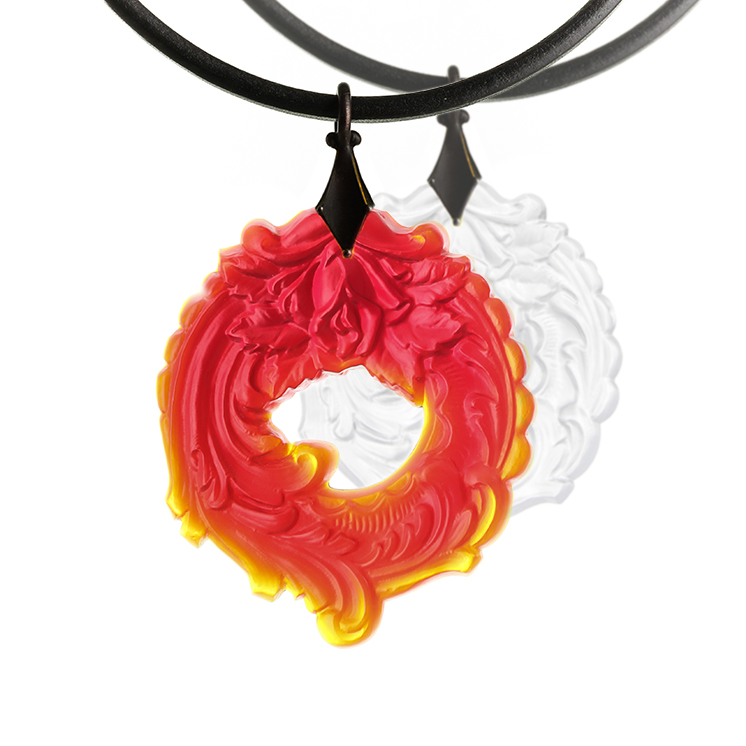
New collection of glass jewelry
January 2023
“Diplomacy & Fashion” award
March 2022“I wish to make this world more pleasurable by the impact of my own energy and emotions incorporated in glass.
To all my co-operators and their families I wish a safe and stable life based on the balance of body and spirit – a life successfully combining time for one’s work and that for one’s family.“
Robert Halama
